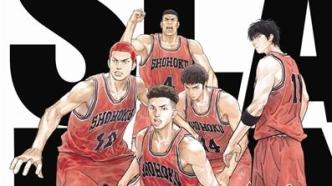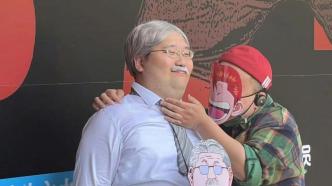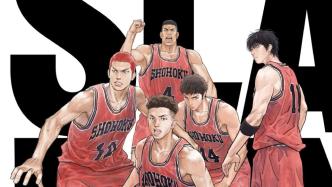
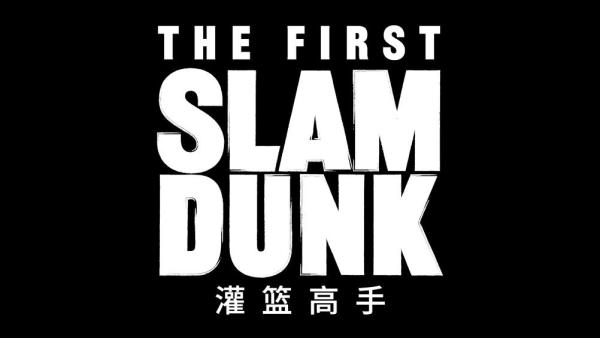
On December 3 last year, the much-anticipated "SLAM DUNK" (SLAM DUNK) movie version was first released in Japan, which set off a movie-watching boom - the first day of 716 million yen (about 37.42 million yuan) super high box office It was a movie-watching craze and won the Japanese box office champion for eight consecutive weekends.
"I will defeat the king of the mountain, so the only way is to win." When the protagonist Sakuragi Hanamichi of "Slam Dunk" said this line on the screen, I believe it awakened the youthful memories hidden in many people's hearts.
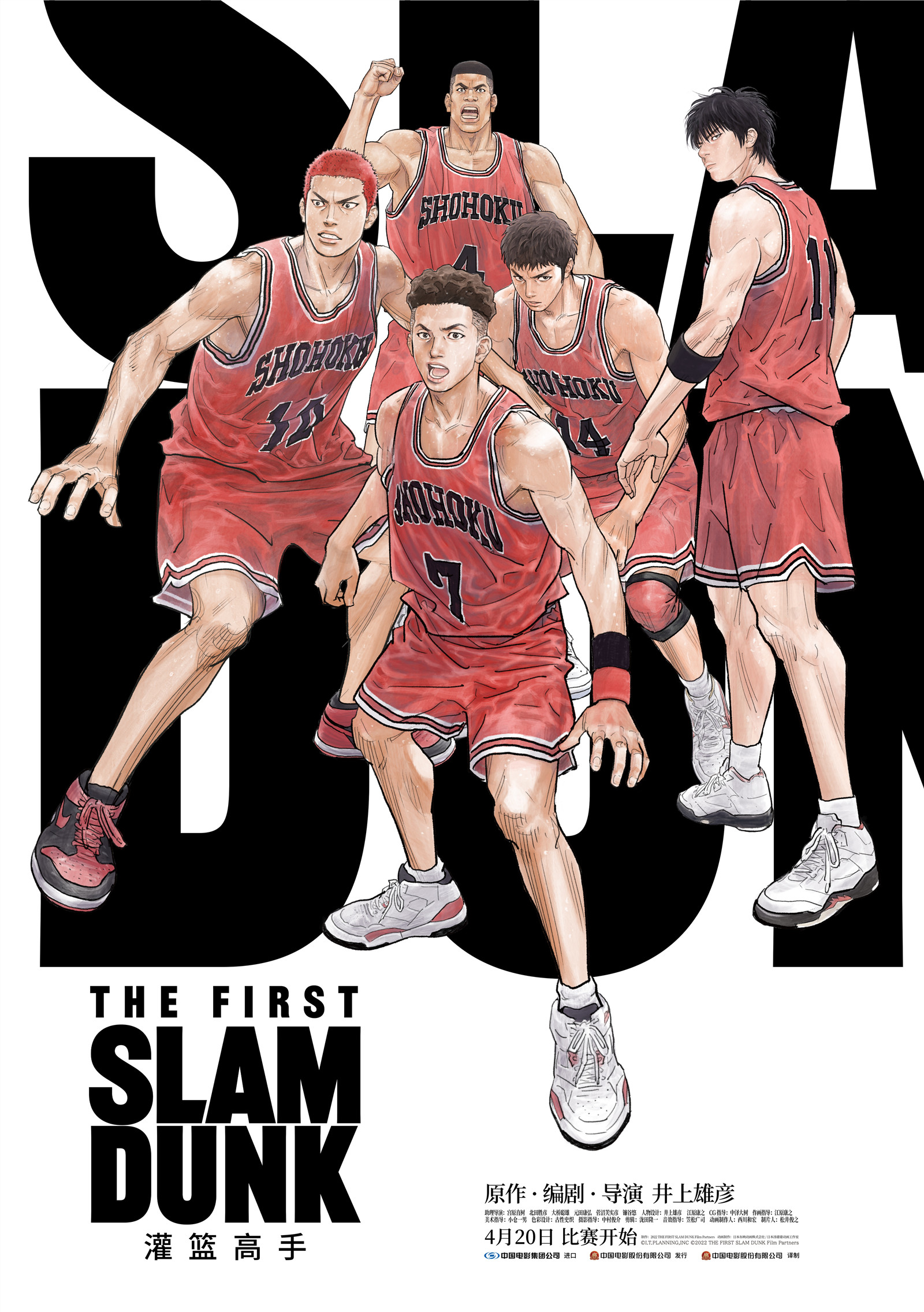
"Slam Dunk" movie poster
Today, the people born in the 1980s and 1990s, who are the backbone of society, their childhood and adolescence coincide with the peak period of this top animation. Not only in Japan, but also in China, a neighboring country separated by a strip of water, many people born in the 1980s and 1990s who love this animation have also excitedly left messages on social platforms, saying with emotion: "Ye Qinghui!"
From the ending of the animation version in 1996 with the sentence "See you in the national competition!" to the return of Xiangbei High School VS Sanno Industry in the national competition in the 2022 movie version, 26 years have passed, spanning the 80s and 90s from the hot-blooded teenagers to the time of steady adulthood. Inoue once expressed emotion in the last volume, although I worked hard for six years to draw, but only four months passed in the story. These four months have left many readers and drama fans with aftertaste for many years.
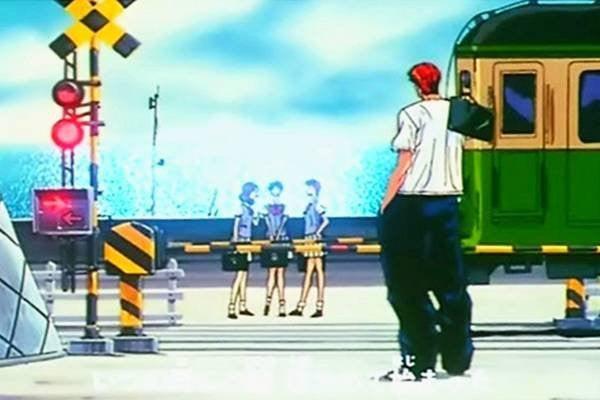
Stills of the animated version of "Slam Dunk"
Lean Comics
Takehiko Inoue, a young man, projected his passion for basketball into his works with the deep will of manga craftsmanship, depicting the magnificent and long-lasting passionate youth like a deep spring.
The storyline of "Slam Dunk" is not complicated. The bad boy Hanamichi Sakuragi joined the Shonhoku Basketball Club because he liked Haruko Akagi, met Haruko's brother, the soul of the basketball team Takenori Akagi, and Haruko's love object, the heartthrob basketball. Athlete Rukawa Kaede, Miyagi Ryota, who is also a fallen man in the world, and Mitsui Totoshi, who has gone astray and turned back as a prodigal son, all of them hold the dream of dominating the country and participate in the prefectural qualifiers. They have played against Miuradai, Xiangyang, Hainan, and Lingnan successively. Waiting for the team to finally get the ticket to the national competition, and finally defeated the ever-victorious king Sanno Industry with the determination of a strong man and the indomitable energy to move forward. After exhausting their strength, they were finally eliminated in the third round.

Inoue refers to the body shape of American stars and recreates it in combination with the proportions of Asians
From the first volume to the thirty-first volume, the stubborn Inoue has almost strict self-requirements for the proportion of the human body structure, and he often takes pictures in the professional arena. He has collected a large number of NBA photos to enlarge and compare, referring to the figure of American stars, combined with the structure of Asians Recreate the proportions, and finally people can see the lifelike players and fierce physical confrontation.
Inoue once made it clear that Kaede Rukawa corresponds to the young Jordan, and Akira Sendo once used "Magic" Johnson as a template (although Mu Shenyi's style of play is more like Johnson). He doesn't like to ask players to train, and the prototype of coach Anxi Guangyi, who is good at chicken soup for the soul, is the champion coach "Zen Master" Phil Jackson. The author's arrangement of the game also has the shadow of the NBA. To challenge Hainan (Lakers), Xiangbei (Bulls) needs to defeat Xiangyang (Celtics) and Lingnan (Pistons) in the same district. Lingnan is the old enemy of Xiangbei, and Jordan also lost to the Pistons many times before the three consecutive championships.
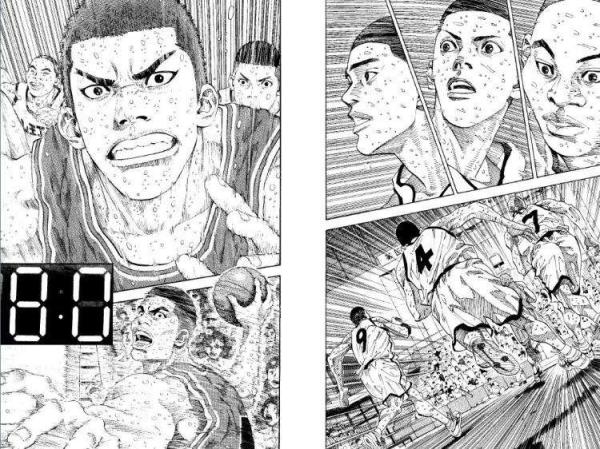
Comic storyboards are still classics
The comic storyboard in "Slam Dunk" is still a classic. In order to make the game atmosphere more realistic and exciting, from the first practice match between Xiangbei and Lingnan, to the final 15 seconds against Sanno Industry, the forty-odd pages of "silent battle" against the sky, Inoue's grid pattern has changed from traditional to more Complex, cinematic storyboards are more proficient. Especially in the last ten or so seconds, Inoue gave up his lines and the linear TV broadcast style. He often changed the camera position at the same time, alternately used medium and long shots, and close-ups. The composition was eclectic, creating a suffocating scene. The sense of urgency, it can be said that silence is better than sound, has always been talked about by the industry.
Regret about the anime adaptation
As a long-form serial comic, "Slam Dunk" has many inconsistent settings, which can be said to be insufficient.
In order to reflect the growth process of the protagonist, Inoue sometimes portrays Xiangbei's opponents as too strong before the game, which will also lead to inconsistencies, a typical example is the game with Xiangyang. Xiangyang's third-year students were repeatedly beaten by Rukawa, and the rebounds were almost wiped out by Sakuragi. Xiangyang ace Fujima Kenji only had 5 points in the game. The same is true for the battles with Hainan and Shanwang. Judging from Inoue's manuscript, Hainan's statistics such as rebounds, steals, and blocks are all at a disadvantage, and they can still win against Xiangbei. This can only be said to allow the protagonist to grow and let the team lose. The Sanno main players who can beat Hainan by 30 points, Masashi Kawada and Eiji Sawakita will be afraid of Sakuragi's super physical fitness.
In 1993, as a super-popular comic, it was reasonable for "Slam Dunk" to be adapted into animation. The animation version has added a lot of plots that have nothing to do with the main storyline, such as the Hainan VS Wuyuan match, the story of the Sakuragi Corps' part-time job, the event of the Shonhoku War with the Kanagawa Allied Forces, and a large number of funny plots such as Sakuragi Hanamichi's "killing with eyes". In the original work, Dr. T explained some basketball rules through annotations, but in the animated version, some of them are explained by other characters such as Ayako.

"REAL" complains about the animated version of the basketball court
The anime version has more inconsistencies than the manga. Mu jumped higher than Sakuragi. Toei also dragged the pace of the game extremely slowly. The athletes ran for a long time without running the entire basketball court. Inoue also complained about the animated version of the basketball court in "REAL". The story continuity was broken, and it took an entire episode for Mugure to shoot a three-pointer.
The biggest difference between the animated version and the manga is that there is no national competition. The national contest is the most essential part of the comics, and a large number of plots echo the beginning of the story. Akagi finally understands why Sakuragi is the savior; Sakuragi told Haruko that he likes basketball; Sakuragi and Rukawa's high-five after victory echoed the punching of the two when they first met.

Echoing the plot before and after: I like basketball
Dongying wanted to change Xiangbei to the champion of the national competition; Inoue refused, so the animation ended hastily. The essence of the above can only survive in comics.
The movie version presents a new Inoue perspective
Regardless of animation or manga, "Slam Dunk" is a contemporary and super-influential work: the first-ranked work in the "One Hundred Selections of Media Art by the Japan Agency for Cultural Affairs", cartoonist, critic, bookstore clerk , Readers' Choice No. 1 in the history of manga in fifty years, the work that Japanese people least want to be realized, the best-selling work in the history of Shueisha's "Weekly Shonen Jump", and the work that occupied the cover for the longest time during the serialization period... …
In addition to various honors, "Slam Dunk" has been popular for decades: comic books are constantly reprinted, cartoons are replayed from time to time, and original paintings have been unfolded many times... The love of "Slam Dunk" for a generation is like Rukawa Kaede The love for basketball seems to be cold, but the blood in the bottom is still surging.
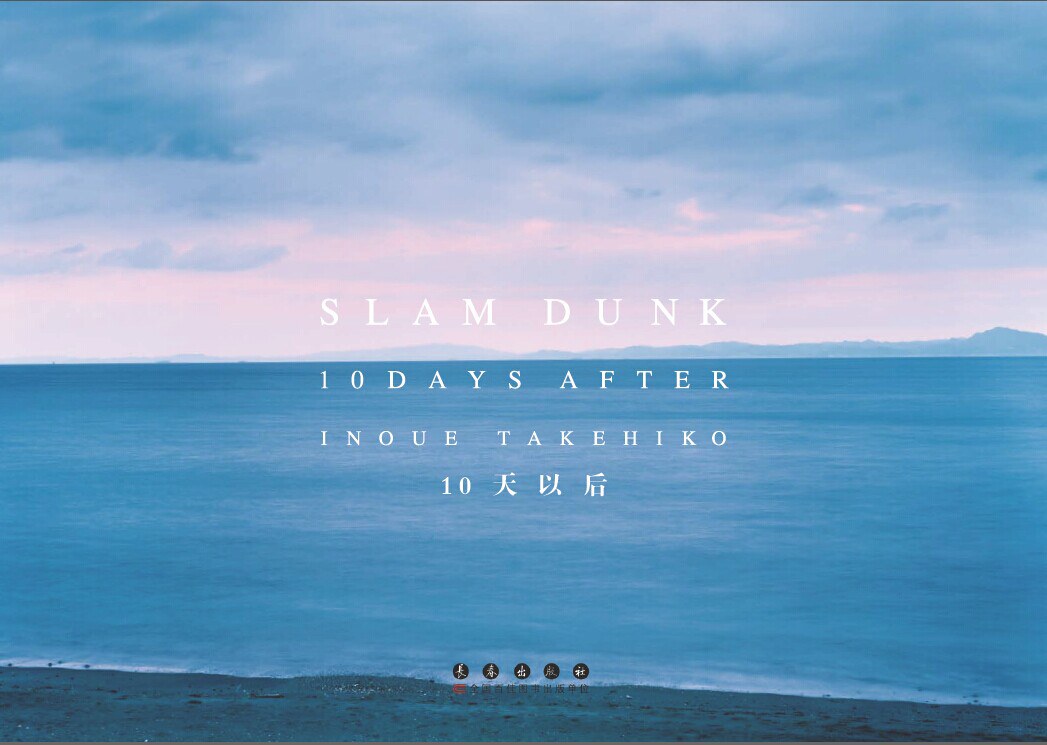
"10 Days Later" album depicts "they" 10 days after the "Slam Dunk" finale "Battle of Xiangbei vs. Sanno Industry"
In 1996, the manga serialization ended, and in the same year, the TV animation came to an end in the 101st chapter. In 2004, the single volume of the manga exceeded 100 million copies. On December 3, Inoue Takehiko left a chalk drawing on the blackboard of Misaki High School in Kanagawa Prefecture, which was about to be abolished, becoming the only official sequel so far.
Facing the invitation to make a sequel, Inoue Takehiko was very cautious. The planning of this film version comes from Toei, the producer of the original animation version. After three visits to the thatched cottage, Inoue was finally moved by a hand-painted character setting drawing of Sakuragi Flower Road. In the interview, Inoue Takehiko talked about the original intention of making the movie version, "The ending form of "SLAM DUNK" is ideal for me, but it is unexpected for readers. The reaction in the world is surprising and even sad. On the one hand, I I feel the satisfaction of the end of the work, and on the other hand, I also feel that some readers are sad. So when the booklet has issued a total of 100 million copies, in order to express gratitude, I published an advertisement in the newspaper, borrowed the school classroom to do activities, and published The album, the complete version of the booklet, and the newly installed version. Every time I do these activities, I can see everyone’s happy faces. I hope to draw something new and bring happiness to everyone.”
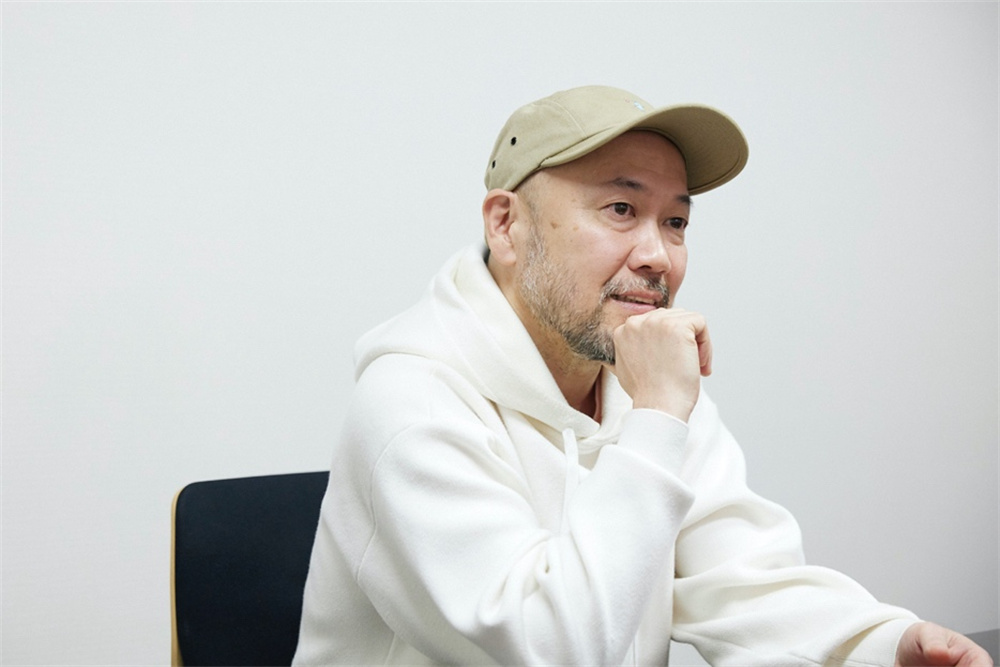
Takehiko Inoue
Inoue Takehiko, who has no experience in animation production, personally worked as the chief director and screenwriter. People who guessed from the official title "THE FIRST SLAM DUNK" that the movie is a remake of the opening part of the animation version guessed wrong. FIRST means "first meeting". The main story of the movie version did not appear in the animation version in the 1990s, and the perspective of the story unfolding is also brand new. Inoue said: "No matter how interesting a manga is, the experience of first reading cannot be replicated. After reading a good work, you will even feel envious of those who haven't read it. Of course, new audiences will have the joy of meeting them for the first time. I hope that this movie will allow people who watched "SLAM DUNK" many years ago to have a taste of the first encounter with the work." This statement is indeed true.

"Slam Dunk" movie stills
The biggest difference between the movie version and the original work is that it does not start from the perspective of Yingmu Huadao. Takehiko Inoue explained: "After the serialization is over, the characters still live in my heart. Sometimes I will make new discoveries and use notes to write down these bits and pieces. This movie is like a presentation accumulated over the years. Perhaps This situation will not change in the future. I will continue to delve deeper into the world of the works, and gradually discover the parts that have not been drawn before... I was only in my twenties when the manga was serialized. During the 6 years from 23 to 29 years old, manga The more you paint, the easier it is to draw. When you are in a period of straight up, you are full of energy, and you feel that there is nothing you can’t do in the world. Therefore, the protagonist is tall and capable, and seems to have unlimited potential. I want to capture that golden period and paint there Last full stop. 26 years have passed, the perspective and values in my heart have not so much changed, but expanded. I have experienced pain and various things that are not as expected, just like everyone else. Not everyone has unlimited potential. Life is always accompanied by all kinds of pain. Today's self can be described from this perspective."
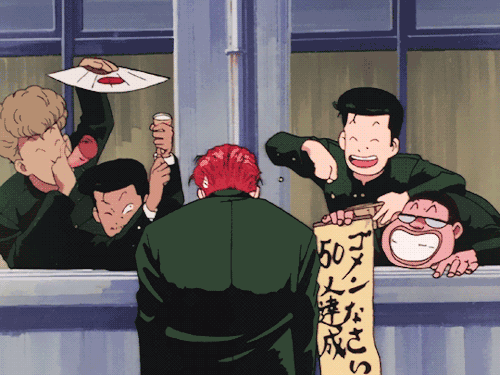
Comprehensive reference for this article:
"Slam Dunk": The story of just four months has made us passionate for more than 20 years
30 years of "Slam Dunk": youth is still full
Think back then|This summer, watch "Slam Dunk" again
"Slam Dunk" theatrical version: some classics that will never fade
"Slam Dunk" and "Ye Qinghui": The Past and Future of Sino-Japanese Folk Culture Exchange
